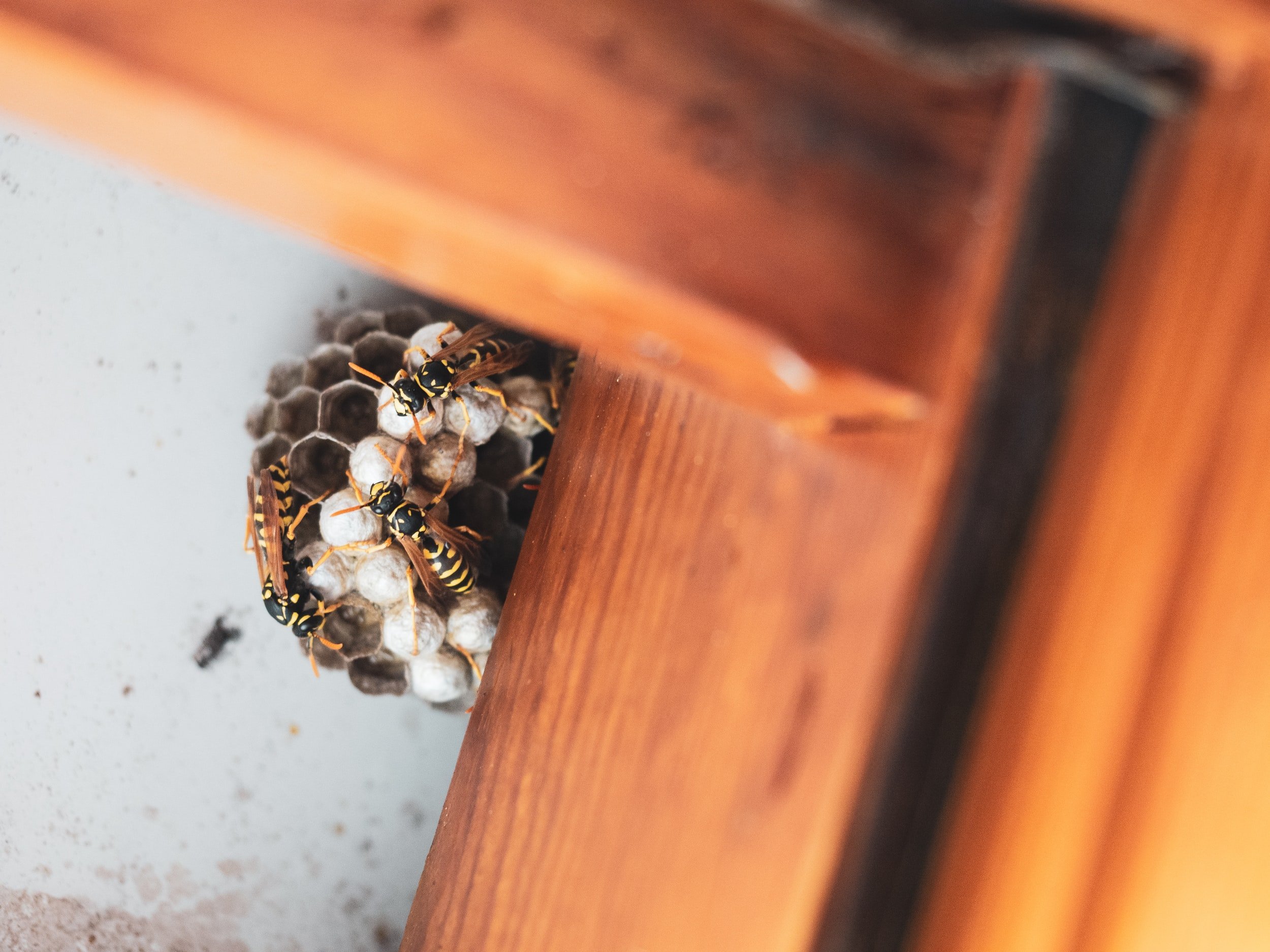
Removing Stinging Pests
Aggressive stinging insects such as hornets, wasps, and yellowjackets can ruin your summertime activities. Not only can they disturb your peace with constant buzzing sounds, but they pose a risk to humans and domestic animals. Venomous stingers in yellowjackets and hornets can cause infection, or worse - allergic reactions can be deadly. Stinging insects sometimes build their nests in areas too close for comfort, such as within decking, under eaves, and behind the siding of your home. Don’t place yourself at risk attempting to remove hostile stinging insects on your own; contact us today.
Characteristics of Wasps, Hornets, and Yellowjackets
Hornets and yellowjackets are specific types of wasps. There are about 20 different varieties of hornets and thousands of species of wasps. Hornets are typically more aggressive and rounder than other stinging insects. Bald-faced hornets are mostly black with white markings, while yellowjackets are black with yellow bands and a pinched waist. Yellowjacket stings are the deadliest as they might cause blood poisoning due to their bacteria-laced stinger. These insects will scavenge for food including other insects, spiders, picnic foods, trash, natural sugars, carcasses, and feces.
Guaranteed Carpenter Bee Removal
Carpenter bees look very similar to bumblebees but have an abdomen that is shiny and bare. We all know the biggest fear with bees is whether or not they sting. The female carpenter bee does have a stinger that she will rarely use while the males can only try to intimidate other creatures because they have no stinger. However, with carpenter bees, that is not the only worry. These are largely-despised pests are because these bees can bore holes into wooden structures.
Have you ever seen little holes that look almost as if someone had taken a drill to them? They can be almost perfectly round holes that are a few inches deep. Carpenter bees drill these holes into wood to nest. However, they rarely stay in these nests. These holes will be found in all types of wooden structures and plants. In fact, different types of carpenter bees actually prefer specific types of wood.
These bees cause major damage to outdoor furniture and patios. Though they are usually not found inside the holes, they will sometimes nest in these holes to rear their young. They will usually nest during the colder months, and newer holes are found typically within the spring/summer months and cause quite the havoc on homes.
Are you finding carpenter bee holes? Call us today to help with all of your pest problems!




